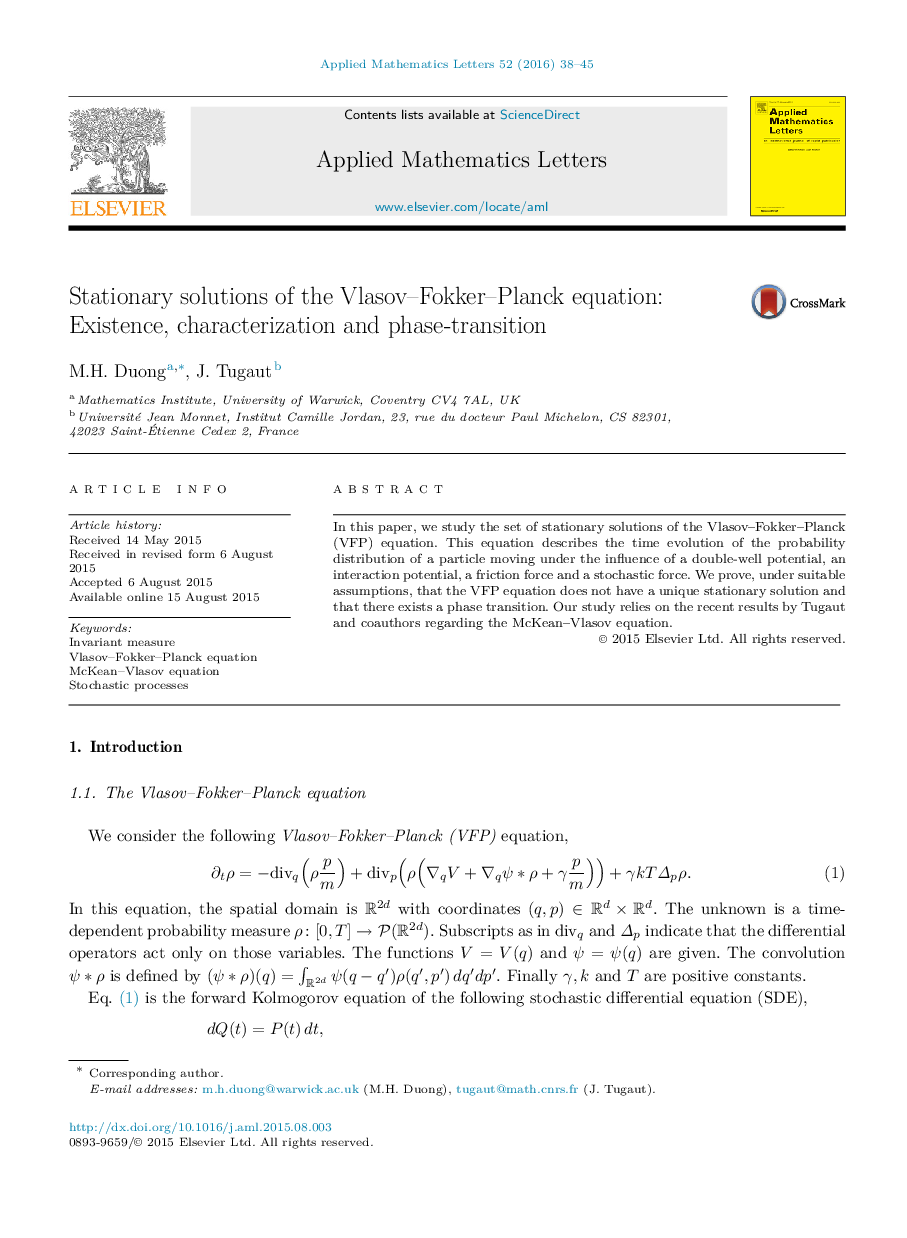| Article ID | Journal | Published Year | Pages | File Type |
|---|---|---|---|---|
| 1707552 | Applied Mathematics Letters | 2016 | 8 Pages |
Abstract
In this paper, we study the set of stationary solutions of the Vlasov–Fokker–Planck (VFP) equation. This equation describes the time evolution of the probability distribution of a particle moving under the influence of a double-well potential, an interaction potential, a friction force and a stochastic force. We prove, under suitable assumptions, that the VFP equation does not have a unique stationary solution and that there exists a phase transition. Our study relies on the recent results by Tugaut and coauthors regarding the McKean–Vlasov equation.
Related Topics
Physical Sciences and Engineering
Engineering
Computational Mechanics
Authors
M.H. Duong, J. Tugaut,
